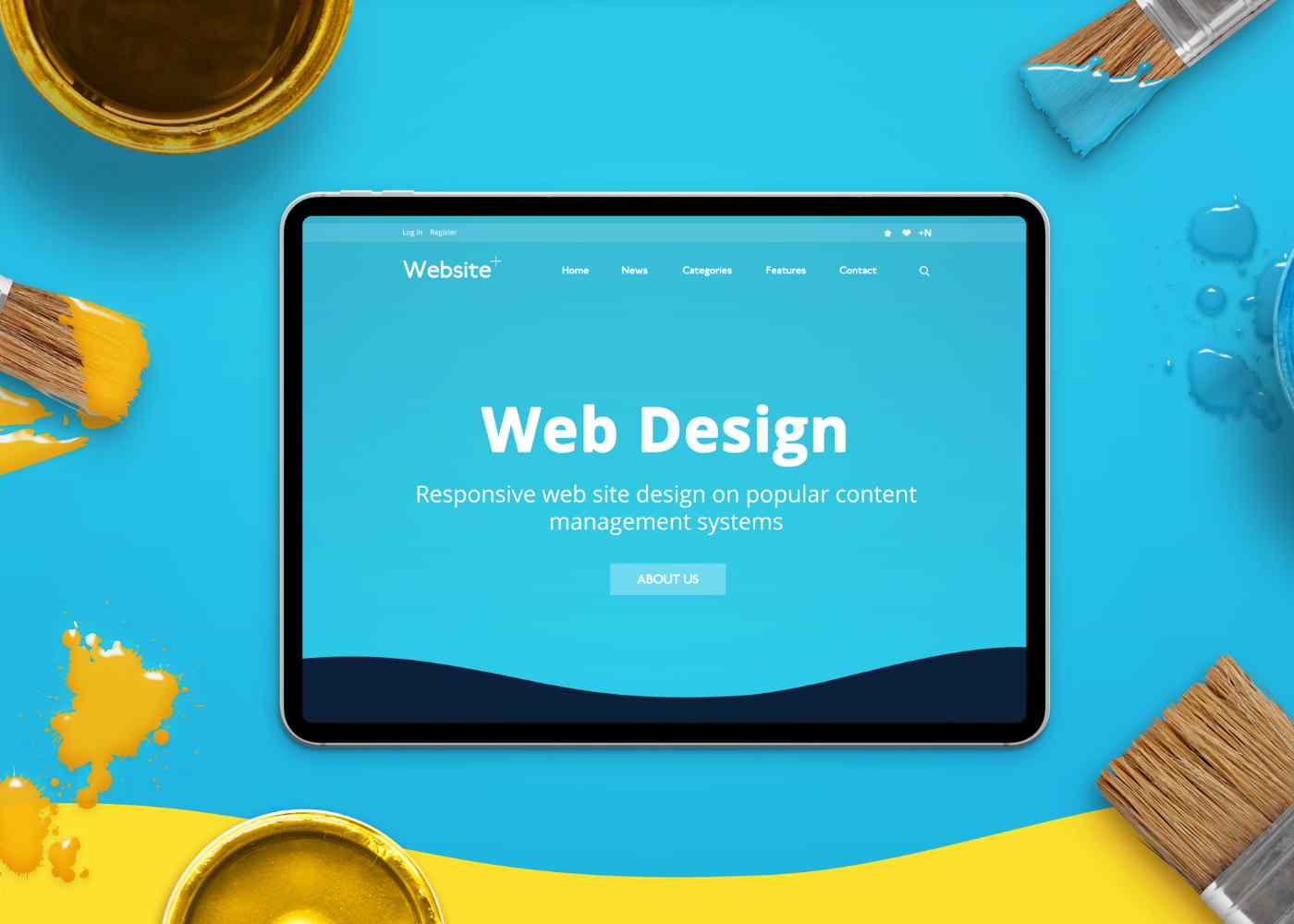Search
Category
- Website Design (240)
- Technology (135)
- Business (127)
- Digital Marketing (78)
- Seo (70)
- How To (46)
- Mobile Application (45)
- Software (34)
- Food (30)
- Guest Blog (27)
Similar Articles




Crafting a high-converting website with SEO-friendly designprinciples is a strategic blend of art and science that can elevate your online
presence to new heights. By harnessing the power of conversion-focused elements
alongside SEO best practices, you pave the way for a website that not only
attracts and engages visitors but also secures a prominent spot in search
engine rankings.
The synergy between design that drives conversions and SEO
tactics that enhance visibility is paramount in today's digital landscape. It's
not just about creating a visually appealing website; it's about ensuring that
every design choice and content decision is geared towards delivering a
seamless user experience while also meeting the requirements of search engine
algorithms.
When crafting your website, it's essential to strike a
balance between aesthetic appeal and functional efficiency. From intuitive
navigation structures to compelling calls-to-action and mobile responsiveness,
each element plays a crucial role in shaping the overall performance of your
site. By incorporating SEO-friendly design principles, such as strategic
keyword placement, meta tags optimisation, and fast loading speeds, you set the
stage for improved organic traffic and higher conversion rates.
In this dynamic guide, we will delve into the intricacies of blending high-converting design elements with SEO strategies to create a digital masterpiece that resonates with your target audience and captivates search engine crawlers. Stay tuned as we unravel the secrets behind a successful website that not only looks stunning but also drives results in the competitive online realm.

In today's digital landscape, high-converting websites play
a vital role in the success of businesses. These websites are designed to
attract visitors and turn them into valuable leads or customers, ultimately
driving business growth. Understanding the key elements and strategies behind
high-converting websites is essential for achieving your business goals and
maximising conversions.
1. Clear CTAs: High-converting websites have strategically
placed and compelling Call-to-Action (CTA) buttons that guide visitors towards
taking the desired action, whether it's making a purchase, signing up for a
service, or downloading content.
2. User-Friendly Navigation: Easy navigation is crucial for
keeping visitors engaged. High-converting websites have intuitive navigation
menus that help users find what they're looking for quickly and efficiently.
3. Compelling Content: Engaging and relevant content is a
cornerstone of high-converting websites. From informative product descriptions
to persuasive landing page copy, compelling content keeps visitors interested
and encourages them to convert.
4. Social Proof: Incorporating social proof such as customer
testimonials, reviews, and case studies can significantly boost trust and
credibility, making visitors more likely to convert.
5. Trust Signals: Building trust with visitors is key to conversion. High-converting websites utilise trust signals like security badges, industry certifications, and transparent policies to reassure visitors and alleviate any concerns.

Examining real-life examples can provide valuable insights
into effective conversion strategies. Let's take a look at some websites that
have successfully implemented tactics resulting in notable conversion rate
improvements:
Mint: Mint's
user-friendly interface, clear CTAs, and personalised financial management
tools have contributed to its high conversion rates and user retention.
Discord: Discord's
community-driven approach, seamless user experience, and interactive features
have led to impressive conversion rates and a loyal user base.
RealSpace:
RealSpace's visually appealing design, informative property listings, and easy
contact options have helped convert visitors into satisfied clients.
By studying these successful examples, businesses can gain inspiration and insights to enhance their own websites' conversion potential. Implementing similar strategies tailored to your target audience can lead to tangible improvements in conversion rates and overall website performance.

In today's digital landscape, incorporating SEO-friendly
design principles into website development plays a crucial role in enhancing
visibility, attracting organic traffic, and increasing the likelihood of
ranking higher on search engine results pages. By aligning the design elements
with SEO best practices, businesses can establish a strong online presence and
effectively reach their target audience.
When it comes to creating a website that resonates with both
users and search engines, several key aspects must be considered. Firstly,
ensuring mobile responsiveness is vital, as more users access the internet
through mobile devices. A responsive design not only provides a seamless user
experience but also satisfies Google's mobile-first indexing criteria, boosting
visibility in search results.
Secondly, the loading speed of a website significantly
impacts user experience and SEO performance. Pages that load quickly not only
keep visitors engaged but also receive preferential treatment from search
engines. Optimising images, leveraging browser caching, and minimising
unnecessary scripts are effective strategies to enhance loading speed.
Moreover, a user-friendly layout that is intuitive and easy
to navigate contributes to lower bounce rates and higher user satisfaction. By
structuring the content logically, incorporating clear calls-to-action, and
optimising the navigation menu, visitors can easily find the information they
need, leading to prolonged dwell times and increased likelihood of conversion.
Lastly, developing content that is optimised for search engines by incorporating relevant keywords, meta tags, and structured data markup is essential for improving organic visibility. Content should be informative, engaging, and tailored to address the needs and queries of the target audience, thereby enhancing the website's relevance and authority in the eyes of search engines.

The marriage of design and SEO principles not only drives
organic traffic but also has a direct impact on conversion rates. When the
design elements of a website are aligned with SEO best practices, businesses
can experience a significant uplift in conversion rates. By creating a seamless
user experience and providing valuable content that addresses user intent,
websites can build credibility and trust with visitors, ultimately leading to
higher conversion rates.
In conclusion, prioritising SEO-friendly design principles
in website development is a strategic investment that yields long-term
benefits. By focusing on mobile responsiveness, loading speed, user-friendly
layout, and optimised content, businesses can enhance their online visibility,
attract quality traffic, and ultimately improve conversion rates – a winning
formula for sustainable online success.
For more insights into the importance of SEO-friendly design principles, you can explore further here.

In today's digital landscape, blending high-converting
elements with SEO-friendly design principles is crucial for the success of any
website. Let's delve into how you can seamlessly integrate these two essential
components to create a website that not only attracts visitors but also
converts them into customers.
When it comes to optimising landing pages for both
conversions and search engine optimisation, a strategic approach is key. Here
are some actionable tips to help you structure your landing pages effectively:
1. Have a Clear Call to Action (CTA): Ensure that your landing
page has a prominent and compelling CTA that guides visitors on the desired
action, whether it's making a purchase or signing up for a newsletter.
2. Keep It Simple: Avoid clutter and distractions on your
landing page. Focus on delivering a clear message that resonates with your
target audience.
3. Match Messaging with Ad Campaigns: Maintain consistency
between your ad campaigns and landing page messaging to create a seamless user
experience and improve conversion rates.
For more insights on creating high-converting landing pages, you can explore resources like HubSpot's 13 Simple Tips for Better Landing Pages and Neil Patel's Guide on Structuring Long-Form Landing Pages.

Achieving a visually appealing website design while adhering
to SEO requirements may seem challenging, but it's achievable with
the right strategies. Here's how you can strike a balance between design
aesthetics and SEO elements:
1. Optimise Images and Multimedia: Ensure that your images and
multimedia elements are optimised for both visual appeal and search engine
visibility. Use descriptive filenames and alt text to improve accessibility and
SEO.
2. Focus on User Experience: Design your website with user
experience in mind. User-friendly navigation, fast loading times, and mobile
responsiveness can enhance both user engagement and SEO performance.
3. Meta Tags and Headings: Incorporate relevant keywords in
your meta tags, headings, and content to improve your website's search engine
rankings without compromising on design aesthetics.
For further guidance on creating visually appealing content
that aligns with SEO best practices, you can refer to articles like How to Create Visually Appealing and SEO-Friendly Content on LinkedIn and The Role of Visual Content in SEO on Pixelixe.
By implementing these strategies, you can craft a high-converting website that not only attracts organic traffic but also converts visitors into loyal customers, thereby maximising your online presence and business growth.

In the realm of crafting a high-converting website with
SEO-friendly design principles, a crucial aspect revolves around measuring
success and iterating for improvement. By employing the right tools and
strategies, businesses can track their website's performance, harness user
feedback, and continually enhance their online presence.
Monitoring a website's performance is pivotal for
understanding its effectiveness and user engagement. Various tools and
platforms exist to facilitate this process:
Google Page Speed Insights: A tool that analyses website speed and provides suggestions for
enhancement.
GTmetrix:
Offers detailed insights into page loading times and performance scores.
Google Analytics: Provides in-depth data on user behaviour, traffic sources, and
conversion rates.
WebPageTest:
Assesses website speed and performance across different browsers and locations.
These tools enable website owners to gather critical data such as loading speed, user interactions, and keyword rankings, empowering them to make data-driven decisions for optimal performance.

Feedback loops play a vital role in the iterative process of
website improvement. By establishing mechanisms to gather feedback from users,
visitors, and stakeholders, organisations can:
Gather Insights: Collect valuable input to identify strengths and weaknesses of
the website.
Analyse Feedback: Utilise feedback data to pinpoint areas for enhancement and
address user preferences.
Act on Feedback: Implement changes based on feedback to enhance user experience
and overall website performance.
By incorporating continuous feedback loops into the website
development process, businesses can adapt to evolving market demands, improve
user satisfaction, and drive conversions effectively.
Tracking metrics, conducting A/B testing, and refining
website design based on data are fundamental practices to achieve optimal
results in terms of both conversions and search engine performance. Constant
vigilance and adaptation are key to staying ahead in the digital landscape.
Crafting a high-converting website with SEO-friendly design
principles is not just about aesthetics; it's about creating a digital masterpiece
that resonates with both search engines and users. By implementing SEO-friendly
elements such as responsive design, strategic keyword targeting, and optimised
header tags, you pave the way for increased organic traffic and improved
conversions.
The symbiotic relationship between a visually appealing
layout and SEO best practices is the secret recipe for a compelling online
presence that not only attracts visitors but also guides them seamlessly
towards conversion. Remember, a well-crafted website is the cornerstone of your
online success, so invest in design that speaks to both human hearts and search
engine algorithms. Embrace the art of blending creativity with technical
precision, and watch your website flourish in the digital landscape.
Do you want to have a website that attracts attention and wows visitors? Then, we are prepared to assist! Contact us by clicking the button below to share your thoughts with us.
adekunle-oludele
Poland Web Designer (Wispaz Technologies) is a leading technology solutions provider dedicated to creating innovative applications that address the needs of corporate businesses and individuals.